|
Living proof why you should resistance train
‘It was in October 2012 when I changed my style of training... I had been doing Spinning® classes four or five times and other cardio sessions a week, together with a few weights. Then I changed to lifting heavy weights, training individual body parts and doing HIIT (High Intensity Interval Training) a few times a week. Why did I make the change? Well, I kept seeing other women on the Internet the same age as me and with children, living busy lives with amazing physiques. I researched what training they did to achieve their great bodies and discovered that lifting heavier (weights) was key to their lean shape and great proportions. So, that’s why I changed my training to achieve my fitness goals. I’m now in the best shape of my life. I’m more confident, stronger and very happy. I totally enjoy the challenge of lifting heavy and the adrenalin buzz I get from it, and I have a personal trainer who helps me. I made this decision to ensure that I was lifting correctly. He also helped me to realise that there’s a mindset behind lifting weights. The myth surrounding the belief that “If women lift weights, they will get bulky” really needs to be laid to rest because it’s so not true! I’m proof and I’m just eight months into this training. So, I’d like to encourage women to step away from the cardio machines because they are taking you nowhere and to lift proper weights instead!’ Follow Sonjia on her fitness journey on Facebook: Sonjia Ashby – Pursuit To Fitness[ Extract from Strength Training For Women
0 Comments
Pic: Red Bull Photographer: Arturs Pavlovs
If I were to say to coaches that their sprint athletes shouldn’t squat, I’d probably be run out of town. However, I could (like many others) argue that squats are over-rated and their value to enhancing sprint speed, particularly for the training mature athlete (i.e. when an athlete has developed considerable ability to bend and extend their knees against resistance) is questionable. But the squat mirrors sprinting… OK the action of extension and flexion is fundamental to running and jumping. On foot-strike the knee will be flexed ready to absorb and transfer ground forces to propel the sprinter forwards by means of a rapid extension of the ankle, knee and hip. So that’s what happens in a squat, right? Well… Over-cooking squats Sprinters often boast that they have “such and such” a squat best, yet many who can squat the entire weight of the England rugby pack, don’t run significantly faster. There are a number of potential reasons for this. 1. Sprinting is a unilateral activity, the normal squat bilateral. 2. A sprinter’s foot will only be in contact with the ground for 0.089 of a second or so when they are flat out. In the blink of an eye they have to impart and overcome force equal to three times plus their body weight. And they need to transfer the vertical absorption of force into a horizontal push, through optimum sprinting biomechanics, to get to the line as fast as possible. 3. Quad dominance, yes other muscles are involved in sprinting (!) and are as, if not more important, notably the hamstrings and the hip-flexors? Being a quadzilla might create biomechanical and structural issues that lead to poor mechanics and increased injury risk. 4. Relevance of muscular actions. Unless there is an attempt on the part of the sprinter to lower and drive up out of the squat as fast as possible, the stretch-shortening action of the quads (and hips) will not be tested in the same way that they are during sprinting, particularly at and near to max velocity (nor will maximum motor unit recruitment be delivered – the subject of another blog post I think). 5. Power to weight American sports scientists looked at the relationship between body weight, 1RM squat and 5, 10 and 40 yard times (1). Seventeen male US football players participated in the survey and they were divided into groups in relation to their 1RM squat and their body mass. Squats were tested to a degree of flexion of 70 degrees and power-to-weight ratio calculated. Sprint times were assessed using timing gates. Perhaps not surprisingly it was found that the athletes with the superior power-to-weight ratios had faster times at 10 and 40 yards. 6. Hormones. Following on from the previous point, It’s important to consider power-to-weight ratio in the light of ultimate sprint performance and squat training protocols. If an athlete regularly trains using a 4-6 set x 8-10 rep protocol, using weights in the 70-85% 1RM range, then the workout will elicit a significant androgen response. This will likely result in weight gain through muscle hypertrophy, due to the copious amounts of the stimulatory hormones produced - testosterone and growth hormone. Thus coach and athlete must be mindful of the squat protocols they employ (and for other similar exercises) and carefully evaluate body weight increases and its effects on power to weight ratio). 7. Genetics. The strength to weight issue also connects back to genetics and the specific propensity for one athlete to be able to “grow” bigger muscles in contrast to another – knowing your genetic blue-print can assist in understanding what the likely training response will be. Knowledge that can aid athlete and coach. Put simply some are more likely to balloon in size just by looking at weights compared to others who need to lift to a very high volume to gain size. (See previous post “Do you fit your genes”.) Final thoughts There are more reasons and research that can be used to knock the squat – it’s too much to go into in detail in a short and hopefully interesting blog post! However, the take-home message is, watch out carefully for the effects your squats are having on speed, biomechanics, weight and potential for injury. One size does not fit all, one programme will not work optimally for every one and what works for X may not work for you…. Reference 1, J Strength Cond Res. 2009 Sep;23(6):1633-6. doi: 10.1519/JSC.0b013e3181b2b8aa (image Redbull content pool)
I watched most of the BBC’s Red button and normal coverage of the recent Portland Indoor Worlds and enjoyed it. The IAAF have tried to implement some new ideas to bring athletics into the 21st century. Some I think good, some not so… Let’s start with a subject close to my heart, the long jump and other field events. The new format brought a kind of shoot-out to the last round with the final eight being halved to four. It looked – although it was difficult to tell from the TV editing of the coverage – that the shoot-out was delayed so that it could be a main focus in the arena. Now, put yourself in Dan Bramble’s spikes he’s gone 8.12m and then 8.14m (for what I think is the third longest indoor jump by a Brit) and then he’s out. He must of oh, so wanted that last jump. What difference really does removing four jumpers (or throwers) make? If the will is to highlight the last round then it could still be done in the same way. With the speed that the US officials were getting every one up on deck (always wondered what that meant) then 8-10 minutes might be all that it takes for the “8-ball” shoot-out. And we all know how much a competition can change in the last round. Putting the shoot-out concept into context with the track – imagine if judges pulled the last 4-8 runners out of a middle distance race at the bell… think there would be a lot of complaints there… mind you… Then there’s the music. It’s fine but I bet it’s as distracting as much as motivational and who’s the music for? The fans, athletes, the DJ? Athletics has an older crowd of supporters, say compared to football, so perhaps a bit of Perry Como or Jim Reeves might go down well! Hopefully you’ll see the issue here. The DJ can kill it or make it – or should I say the music. It seems that a happy balance needs to be struck. And then there was a telling moment when Ashton Eaton, shushed not only the music but also the announcer to a round of applause. Silence can provide as much a focus as fireworks and smoke. Speaking of which I thought that was fine and fun. The carry-over from the World Relays held in Bahamas worked when athletes were introduced for the finals, even if some of the teams could do with a bit of choreography! Perhaps lottery funding should be extended to include “cutting shapes”. Having the presentations outside of the arena – well, that sped up proceedings, which I guess was the aim of that. That’s not a bad idea, but I probably don’t expect to see that at the Olympics or outdoor Worlds any time soon. Although having the ceremonies at breaks in the programme i.e. between morning and evening sessions and at the start of these sessions could be an option (too many in one go perhaps?). What else? The display boards next to the pit for example, good idea. But perhaps Janay DeLoach’s reason for having her 6th round jump measured from a point further back could have been highlighted (there or somewhere else). The BBC apparently found out through social media what had happened. If improving spectator interest is what it’s all about then that could help – we live in an age where info is available instantaneously after all. Similar public display of “why” could go for, what technique a thrower or jumper uses (just an idea that) and even the false start - although there could be a desire to say less then and there… Indoor athletics has a lot of scope to be innovative and to showcase and test aspects that could happen outdoors. All power to the IAAF for picking up the ball in Portland. You have to start somewhere. And finally, no I’ve not finished just yet… I’m old enough to recall what happened when Kerry Packer put a rocket up the proverbial of cricket... one-day games, coloured uniforms, playing under floodlights, white balls, innovative TV… it’ll never catch-on. Well… Athletics should reflect on its quest for innovation - unless you live in India, I believe (or it’s the Ashes), the 5-day game has seemingly been put on the back burner. So indoor track could be the one-day game equivalent of cricket and outdoors the Test match in future… I hope not. The 400-metre track is the heart of the sport. The balance between razzmatazz, PR good ideas and rubbish ideas needs to be carefully developed, considered and implemented and taken from the indoors to the out. But athletics needs to start somewhere. This issue our intrepid team chase Dodos - well they go to Mauritius for a 50km sky running race and encounter a man called Lightfoot! We also go to the circus to see whether trapeze and high wire skills could boost obstacle course race skills. For those with a two wheel fix, we talk to Emma Pooley (mind you she likes to run and swim now too) and give you plenty of rubber in our 25mm tyre gear test!
www.outdoorfitnessmag.com Pippa won the England indoor pentathlon championships yesterday in Sheffield. Her performance took her to second on the all-time u17 lists. As her coach this was an added bonus as my attentions were focuses on what happened on the day and not on other targets. The news however was very encouraging when I can see there is more to come. Coaches are never happy are they?!
Pippa is also coached by Lorna Booth (hurdles), Trveor Llewlelwyn (high jump), Judy Oakes and Lorenzo (shot) and William Kwatia (S&C). Coaches need to work together and share skills and knowledge to get the best out of the athletes and sportsmen and women they coach. April issue of Top Sante has an article where I'm asked some questions re women and resistance training and they've also used some of the exercises from my book.
Mind you they didn't choose the ones that would have the most benefits... stll displaying an aversion to using heavier loads and compound moves...... But it's all good coverage! Designing a training programme to enhance speed and power can be mentally taxing; so much so that those on the hunt for those oh, so prized attributes may develop a complex.
|
Categories
All
Click to set custom HTML
|
Proudly powered by Weebly
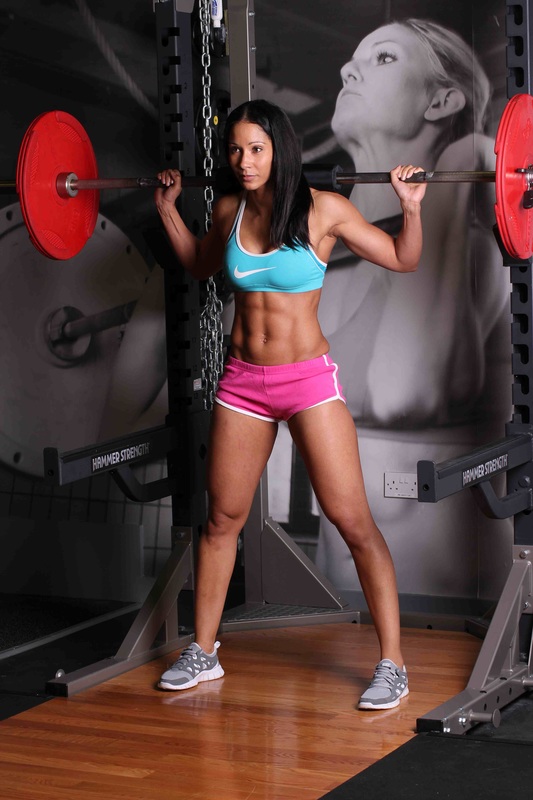
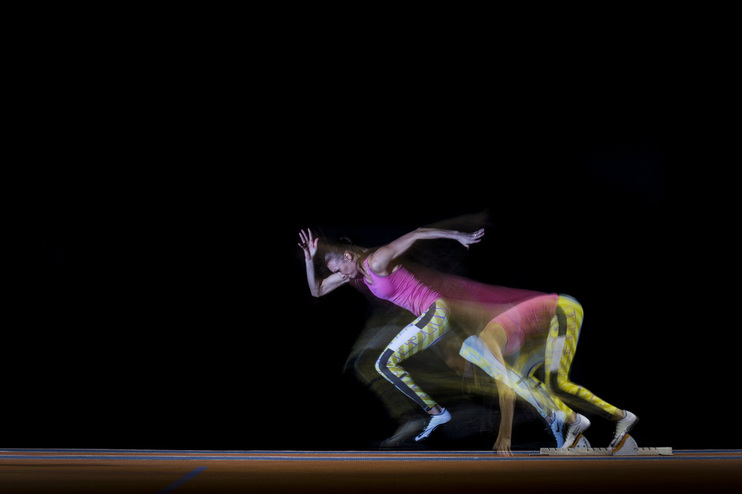
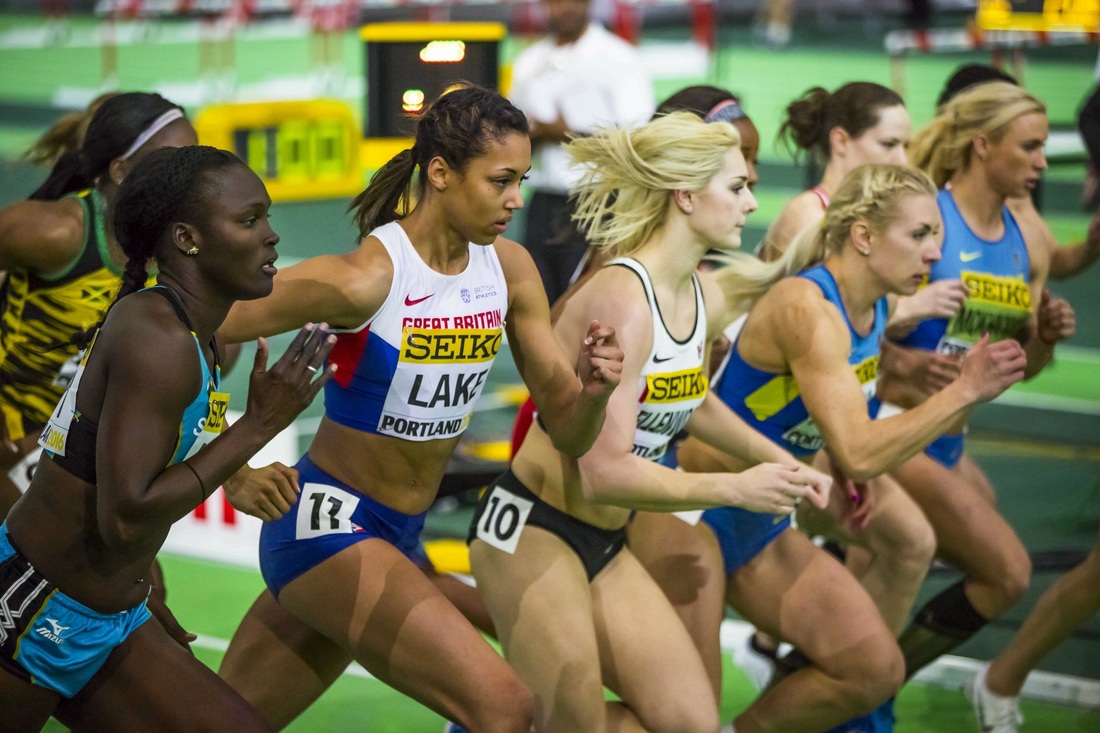


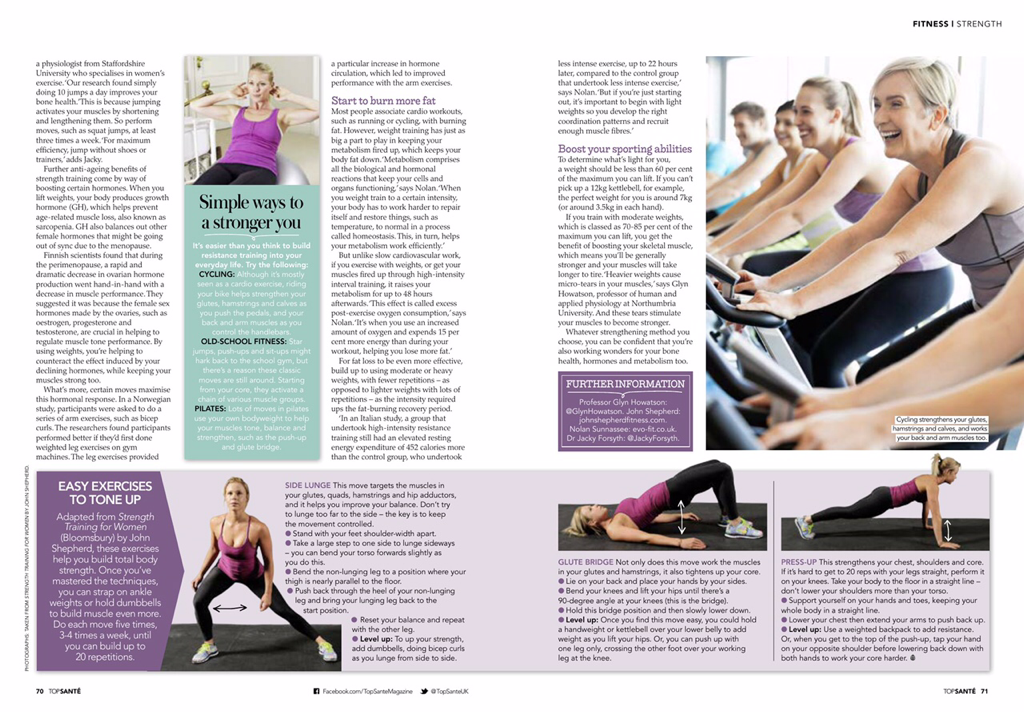
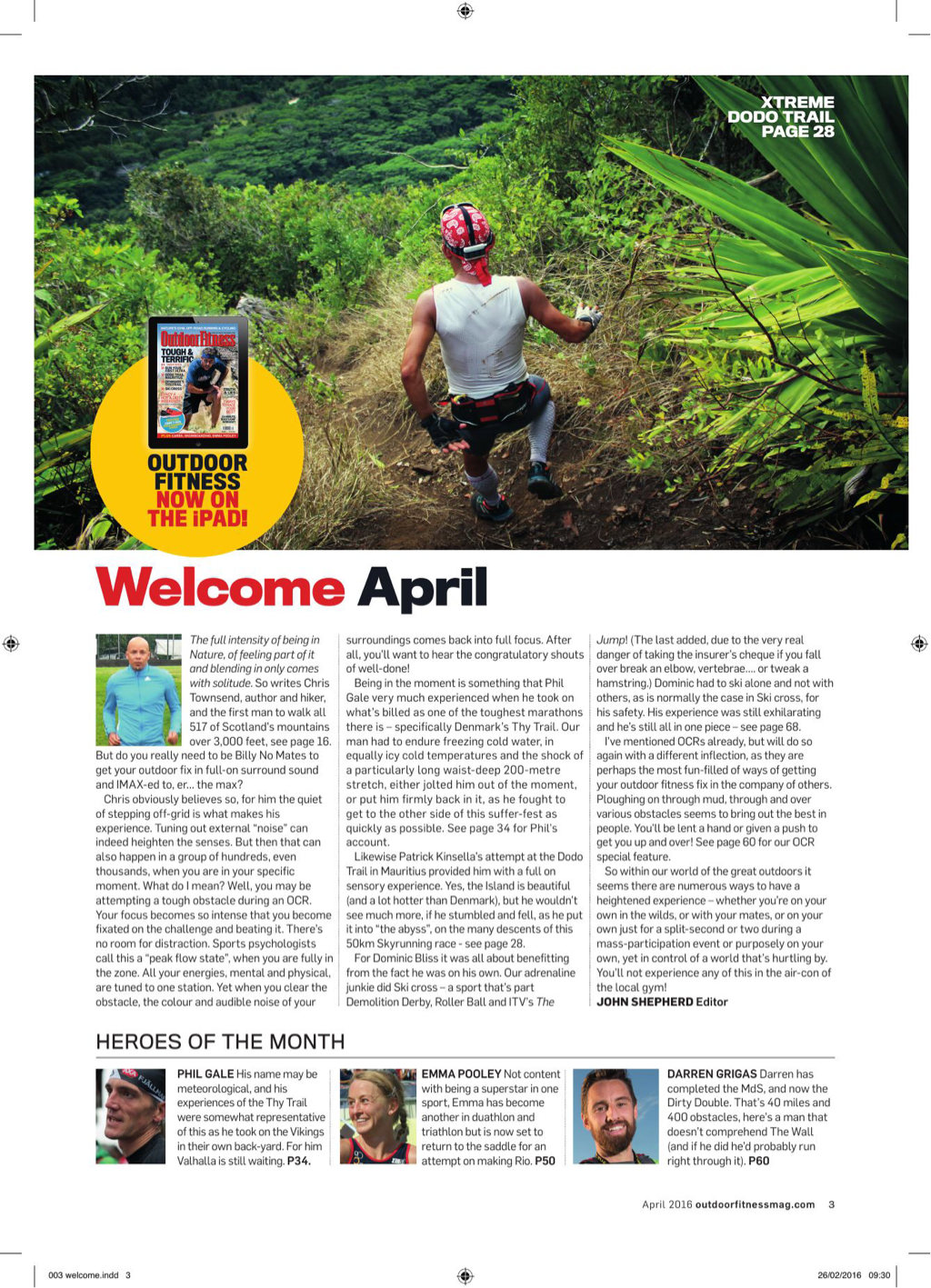
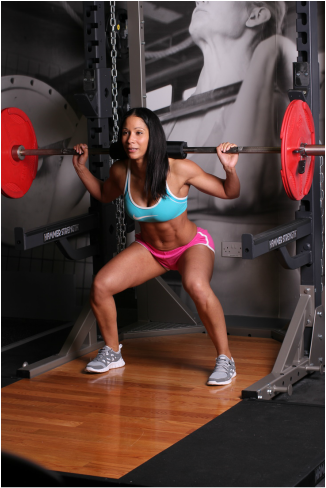

 RSS Feed
RSS Feed
